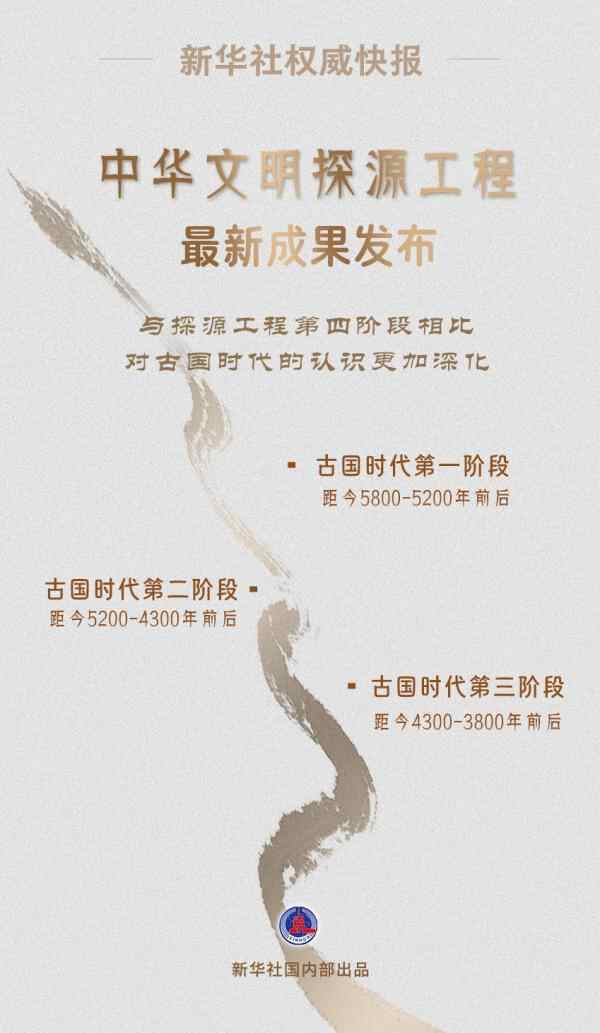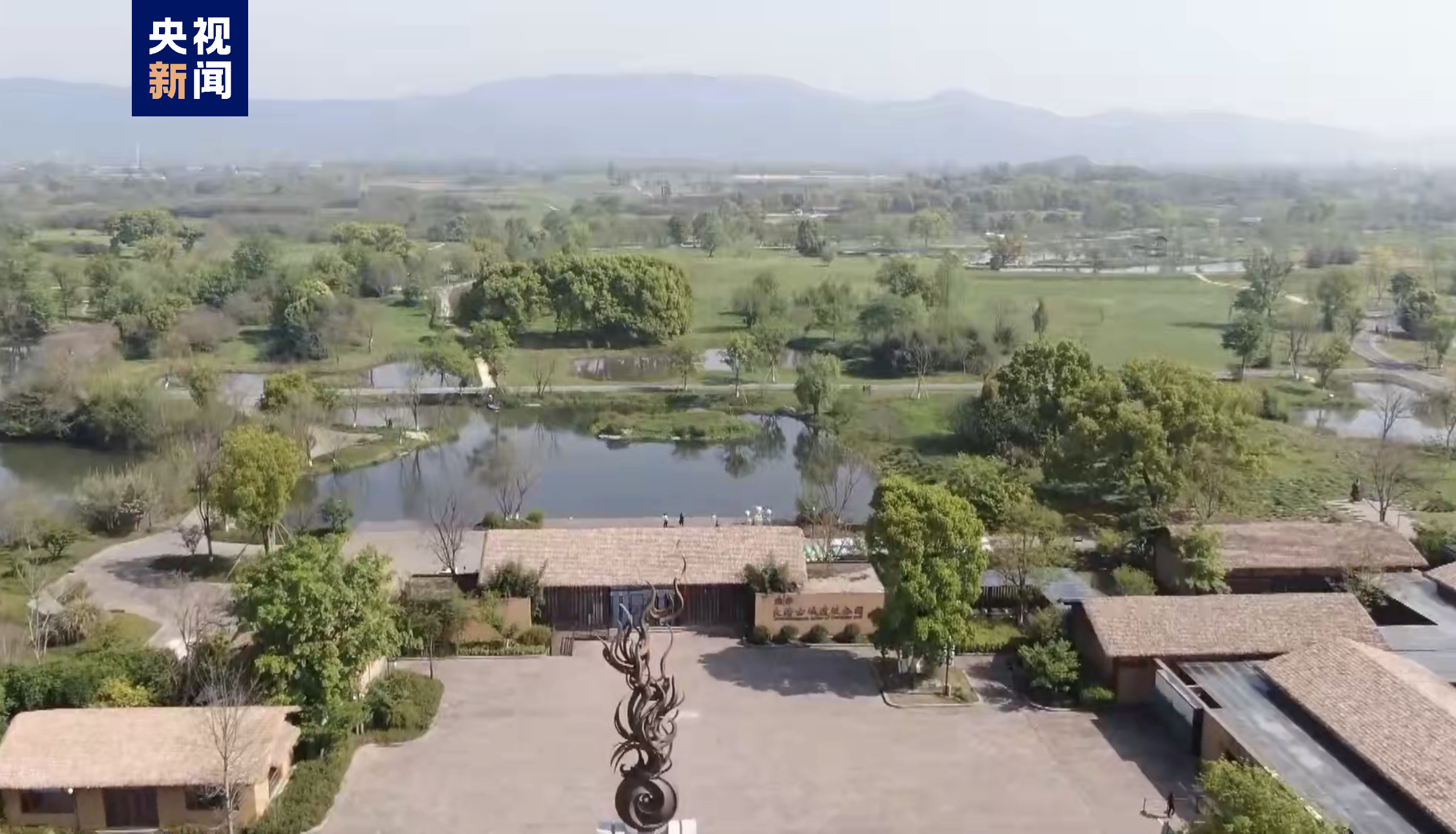
This morning, the National Civilization Bureau released the “Comprehensive Research on the Origin and Early Development of Chinese Civilization” in Beijing, which is the latest research results of the “Chinese Civilization Source Exploration Project”. The Exploration Project is based on field archaeology and supported by the joint research of multiple disciplines of natural sciences and humanities and social sciences. It is a major scientific research project for the study of ancient Chinese history and culture. Since the implementation of the fifth phase of the 2020 Source Exploration Project, the space-time scope of research has been further expanded. Focusing on the Jiaojia Site in Jianping, Liaoning, Liaoning, Liangzhu in Liangzhu in Yuhang, Shanxi, Taosi in Xiangfen, Shanxi, Shenmu Shimao in Shaanxi, Erlitou in Yanshi, Henan, Sanxingdui in Guanghan, Sichuan, etc., while deepening the overall understanding of the origin and early development stages of Chinese civilization, it has focused on key time nodes and major events, carefully designed multi-disciplinary comprehensive research, and made a series of progress.

Deepening the understanding of the origin and early development of Chinese civilization
Project research believes that starting from about 5,800 years ago, various regions on the land of ChinaKomiks has successively experienced relatively obvious social differentiation and entered the accelerated stage of the origin of civilization. It can be divided into two eras from 5,800 years ago to 3,500 years ago, and the ancient era can be further subdivided into three small stages. Compared with the fourth stage of the source exploration project, Cinema has a deeper understanding of the ancient country era. Specifically:
The first stage of the ancient country era was approximately 5800-520Babaylan0 years agoKomiks. Represented by the Niuheliang site in the Western Liaohe River Basin, archaeological excavations discovered and confirmed that the first location of the site was a large base building complex composed of 9 bases. The famous “Goddess Temple” unearthed in Komiks is located on one of the bases. This base is large in scale and has a remaining height of more than 4.6 meters. This release is of great significance to understanding the architectural relationship and sacrificial nature of the first location of Niuheliang.
The second phase of the ancient country era was about 5,200-4,300 years ago. The Hongshan culture in the Xiliao River Basin began to decline, while civilizations in the middle and lower reaches of the Yellow River and the middle and lower reaches of the Yangtze River have embarked on different development paths. Social differentiation has been further highlighted, and the ability to mobilize social resources has been strengthened.
The Jiao Family Site has newly discovered the middle-term city site of Dawenkou culture, which is currently the earliest prehistoric city site in the lower reaches of the Yellow River. The newly discovered high-level tombs have institutionalized manifestations of multiple coffins and burial jade and pottery ritual vessels, which are one of the sources of the materialized manifestations of the Chinese civilization’s ritual system. In the past three years, archaeological work at the Liangzhu site has been carried out around the water conservancy system. CinemaNearly 20 new dams were newly discovered outside Liangzhu, north of Tangshan, and signs of dams were also found in Jingshan, Deqing and other places farther away. The C14th year was about 5,000 years ago, and belonged to the same system as the 11 dams in the original Cinema.

The third stage of the ancient country era was approximately 4300-38Babaylan00 years ago. The social development of the Cinema tourist areas in the middle and lower Yangtze River has stagnated, and the Central Plains and Northern regions have come from behind.>Babaylan started a new round of civilized development, and then formed a historical trend centered on the Central Plains, laying the foundation for China’s historical development. In 2022, the corner floating carving of Komiks was discovered at the Imperial City Terrace at the Shimao ruins, providing key evidence for the judgment of the age and nature of the building of the building of the Stone City Terrace at the Shimao Imperial City Terrace. A total of 200 meters on the west side of the Dataiji base were found in rows of noble cemeteries distributed in rows with stone walls. The Taosi site has confirmed the largest prehistoric rammed earth building foundation known to date, with an area of 6,500 square meters and a total area of more than 540 square meters. Komiks is the largest single rammed earth building in the Neolithic era discovered archaeologically.


380 years ago<a After 0 years, Komiks entered the dynasty era. Important progress has been made in archaeological work represented by Erlitou Site and Sanxingdui Site.
A number of roads and walls on both sides of the road were newly discovered in the central area of the Erlitou site. These roads and walls all over ErlitouBabaylan City is divided into multiple square and regular grid areas, showing that the social structure at that time was obvious and the hierarchical order, implying that there was a mature and developed ruling system and model at that time, which was the most important sign of Erlitou’s entry into the dynasty country. The breakthrough work at the Sanxingdui site was to initially understand the distribution range and internal structure of the Babaylan area, and to clear a large number of important relics such as the “Cinema Sacrifice Pit” were newly discovered and cleared, and more than 12,000 cultural relics were unearthed (2,300 complete instruments). Research shows that the burial years of the eight sacrificial pits were concentrated in the late Shang Dynasty and early Zhou Dynasty (that is, about 3,100-3,000 years ago).
Source | Yangcheng Evening News • Yangcheng School Comprehensive CCTV News and Xinhua News Agency Editor | Chen Ruizhi